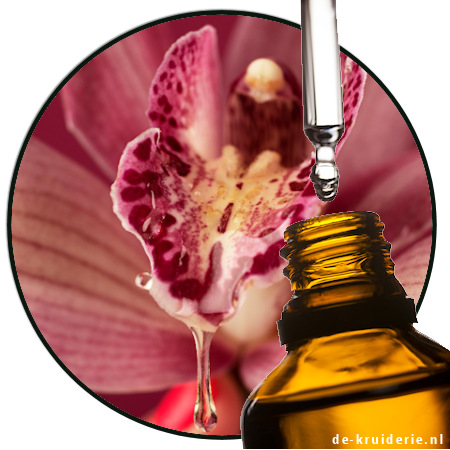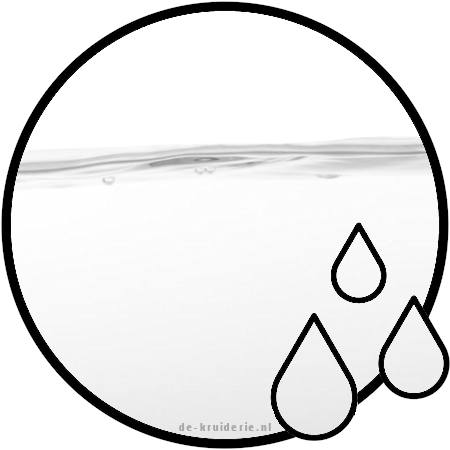Dowanol DE / DEGEE
CAS number: 111-90-0
Physical properties : colorless slightly viscous liquid, readily soluble in water and many organic solvents; low volatility (higher boiling point around ±202 °C)
It is a solvent / co-solvent useful in already / fragrance sticks, room sprays, and perfumes (helps dilute difficult-soluble fragrances and stabilizes blends).
Helps dissolve difficult to dissolve fragrances such as resins and absolutes.
1st Class Quality Products
All fragrances are selected with care
Delivery from stock
We supply everything from our own stock, unless otherwise stated on the product itself.
Dowanol DE is a trade name for diethylene glycol monoethyl ether(INCI/chemical name: 2-(2-ethoxyethoxy)ethanol) and is also called DEGEE or Carbitol.
Why is it used
- Solvent / co-solvent: dissolves both lipophilic fragrances and some aqueous components well, creating homogeneous formulations.
- Slow evaporation/tenacity: lower volatility compared to ethanol helps improve the long-term longevity of certain notes.
- Humectant / viscosity modifier: improves skin sensation and can make sprays or diffuser oils slightly less volatile.
- Diluent – Solvent: helps dilute difficult to dissolve fragrances.
So it is often used as a solvent and co-solvent in already / fragrance sticks and other fragrance products because it mixes well with both water and organic solvents and evaporates slowly, which can slow and stabilize the diffusion of fragrance.
In perfumes, it helps dilute difficult-to-solubilize fragrances and stabilizes blends; it partially slows the evaporation of volatile notes, changing their longevity without being strongly fragrant itself.
Difficult odorants that DOWANOL DE can help dissolve
It is a polar, water-miscible co-solvent with good solvation for both slightly polar and moderately non-polar substances.
In perfumery, it is mainly used to effortlessly dissolve certain heavy, low-fluid or semi-polar/user-sensitive materials.Key examples:
- Natural absolutes and resins: labdanum, benzoin, opoponax, styrax, certain floral absolutes (jasmine, tuberose) that contain tough, resinous fractions.
- Resinoids and balsams: substances found in resins and balsams that dissolve poorly in pure ethanol.
- Waxy or high-molecular materials: some long-chain esters and alcohols, ceresin-like fractions or aromatics with higher melting points that tend to crystallize in ethanol.
- Some musks and fixatives: macrocyclic or heavy nitro/ketone-type fixatives that are low volatile and less ethanol-soluble.
- Some synthetic and semi-synthetic solubilisers: heavy aroma chemicals with mixed polarity where ethanol alone does not give sufficient coupling.
Briefly why it works
- Dowanol DE has both polar (glycol-ether) and non-polar properties so it acts as a bridge between ethanol/aqueous phases and fatter aromatics, prevents precipitation and slows evaporation improving tenacity.
Sample formula – dissolving labdanum absolute (10 g batch)
- Labdanum absolute: 2.0 g
- Dowanol DE: 1.0 g (10%)
- Ethanol 96% (perfume grade): 6,5 g
- Dipropylene glycol (DPG): 0.5 g
- Total mass ≈ 10.0 g
Summary: Dowanol DE here acts as co-solvent to dissolve the tough, resinous fractions of labdanum; ethanol is the main diluent for perfume scoring; DPG improves tenacity and capillary properties in applications such as diffusers.
Production steps
- Provide clean glassware, scale (±0.01 g) and personal PPE (gloves, goggles).
- Weigh DEGEE (1.0 g) into a small measuring bottle.
- Add DPG (0.5 g) and stir lightly to form a homogeneous intermediate medium.
- Add labdanum (2.0 g) slowly. Heat gently in hot water bath to a maximum of 35-40 °C while stirring gently until the total mixture is clear or shows no visible particles (usually several minutes).
- Add ethanol 96% (6.5 g) while stirring; stir for 1-2 minutes until homogeneous.
- Let cool to room temperature; check for cloudiness or precipitation.
- Filter if necessary through a 0.45-1 µm filter or fine funnel for clear final product.
- Fill into dark glass vials, label batch and date; save samples for testing.
Variations and guidelines for absolutes
- Absolues contain volatile and tough fractions; use similar approach but start with lower Dowanol DE (5-8%) because floral absolutes often dissolve better in ethanol.
- For 10 g batch absolute: absolute 2.0 g; DEGEE 0.6-0.8 g; DPG 0.4 g; Ethanol 6.8-7.0 g.
- Do not heat above 40 °C to avoid degrading volatile top notes or delicate fractional aromas.
Sample simple formula – Reed diffuser 100 mL
- Fragrance concentrate (perfume oil): 20 mL
- Dipropylene glycol (DPG) or Augeo : 65 mL
- Dowanol DE: 15 mL
Note: DPG is the common base/carrier fluid for reed diffusers;
Dowanol DE here acts as a co-solvent to dissolve difficult odorants and to moderate the release rate.
Start with these ratios and adjust fragrance strength and diffusion rate to taste.
Production steps (small batch, safe)
- Work in a clean, well-ventilated area with gloves and safety glasses.
- First weigh or pipette Dowanol DE (15 mL) into a clean volumetric flask.
- Add DPG (65 mL) and stir gently to mix.
- Slowly add the fragrance concentrate (20 mL) and mix until clear homogeneous mixture.
- Filter through a fine stainless steel funnel or 0.45-1 µm filter if excipients or undissolved particles are expected.
- Fill in appropriate diffuser bottles, place already and label batch number + production date.
- Save samples for testing.
- If cloudiness or separation occurs: increase Dowanol DE slightly (e.g., +5%) or decrease odor concentrate; retest.
- If fragrance disappears too quickly: increase Dowanol DE or decrease ethanol or light volatile fraction in perfume-blend; or reduce number of sticks.
- If odor is too slow or weak: decrease Dowanol DE or add small percentage of more volatile solvent (ethanol) in controlled tests.
Brief comparison: Augeo versus DPG as a carrier for fragrance products
What they are overall
- Augeo: brand name for a modern glycerin-based diffuser/aircare base (low volatility, low odor, partially renewable).
- DPG (Dipropylene glycol).: traditional, neutral diffuser carrier; well soluble for many fragrances, widely used in reed diffusers and cream sprays.
Main differences (practical)
- Evaporation
- Augeo: lower vapor pressure → slower, more controlled release; nice for longer life.
- DPG: medium vaporization profile → well-balanced release, delays top notes but less than Augeo.
- Odor neutrality
- Augeo: very low proprietary odor profile; changes odor note minimally.
- DPG: virtually odorless in normal concentrations; widely accepted.
- Solubility
- Augeo: very good solvation for many raw materials, designed for aircare blends.
- DPG: excellent solubility for most odorants; industry standard.
- Viscosity and capillary action
- Augeo: may flow slightly differently in combination with sticks (test required); often formulated to optimize capillary properties.
- DPG: proven capillary action in reed diffusers.













